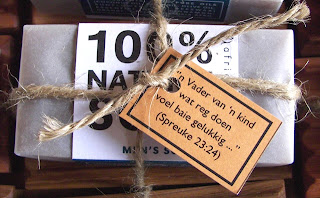When I first discovered the worms, I thought to myself, that's it, I am going to use the nasty chemicals and wipe these pesky fuit flies out!! I can still cope with 50% of them having worms but more than this, really what is the point? At this rate, I was going to end up buying someone elses poisoned fruit anyway. I then did some inquiries at the local co- op and was told to use Malasol or Lebaycid but after reading the warnings and precautions, I decided against it and went back home to the internet for some tips on how to handle the fruit flies in a more environmentally friendly way.
By the way, the 2 pics above, are of baby Butcher birds in a nest in one of the aprcot trees .Their parents are doing a sterling job of keeping marauding birds away that are raiding the apricots.
Another bonus of not using nasties, is that your natural predators start to return, like the Ladybirds ( they eat aphids), in the blurry picture below. I was so excited about seeing the Ladybirds in my apple trees, I went to google them for some more info and was totally gobsmacked to find out that they eat up to 500 aphids a day. You will see in the pic below that there are darker little spots on the leaves which are the aphids... a week later, NO aphids on any of my apple trees.
To help combat the fruit flies, the first step is to pick up any fruit that has fallen on the ground, or destroy any fruit that has been stung. Stung fruit always has a tiny harmless looking little prick mark on the skin. In the seven years that we have been here, I have always left the fruit on the ground to rot away. This is a no-no as the worm larva in the fruit then borrow into the ground, only to emerge the following summer as fruit flies and so the cycle is perpetuated. I must admit that one of the main reasons I left the fruit on the ground, was that I noticed bees feeding on the nectar and thought it to "bee" a bonus for them in our dry summers. I once took honey out for another guy who had a bee hive in an abandoned apricot orchard and the honey was dark and tasted like apricot jam, delicious!
The second step is to hang fruit fly traps in the trees that attract the male fruit fly and thereby you limit the reproduction of fruit flies.
I am still trying to find a recipe for this "muti" which you put into a plastic 2 lt bottle with a few holes poked around the top. These you hang in your trees, one every 10m square. I must admit that this also bugs me a bit as it also attract other male bugs, including the beneficial ones too!
 | ||
| Soap maker Rae Conterio doing a bit of weeding. |
My last tool in my arsenal against the dreaded fruit fly, is something I have just discovered and it is called GF 120 Naturalite. This is apparently new on the market and it is applied as a spray that targets male fruit flies. I asked the local agricultural officer if this would not also affect other male insects but he was unable to tell me and said it was an interesting question and he would get back to me. I am still waiting.... Till next time!


























